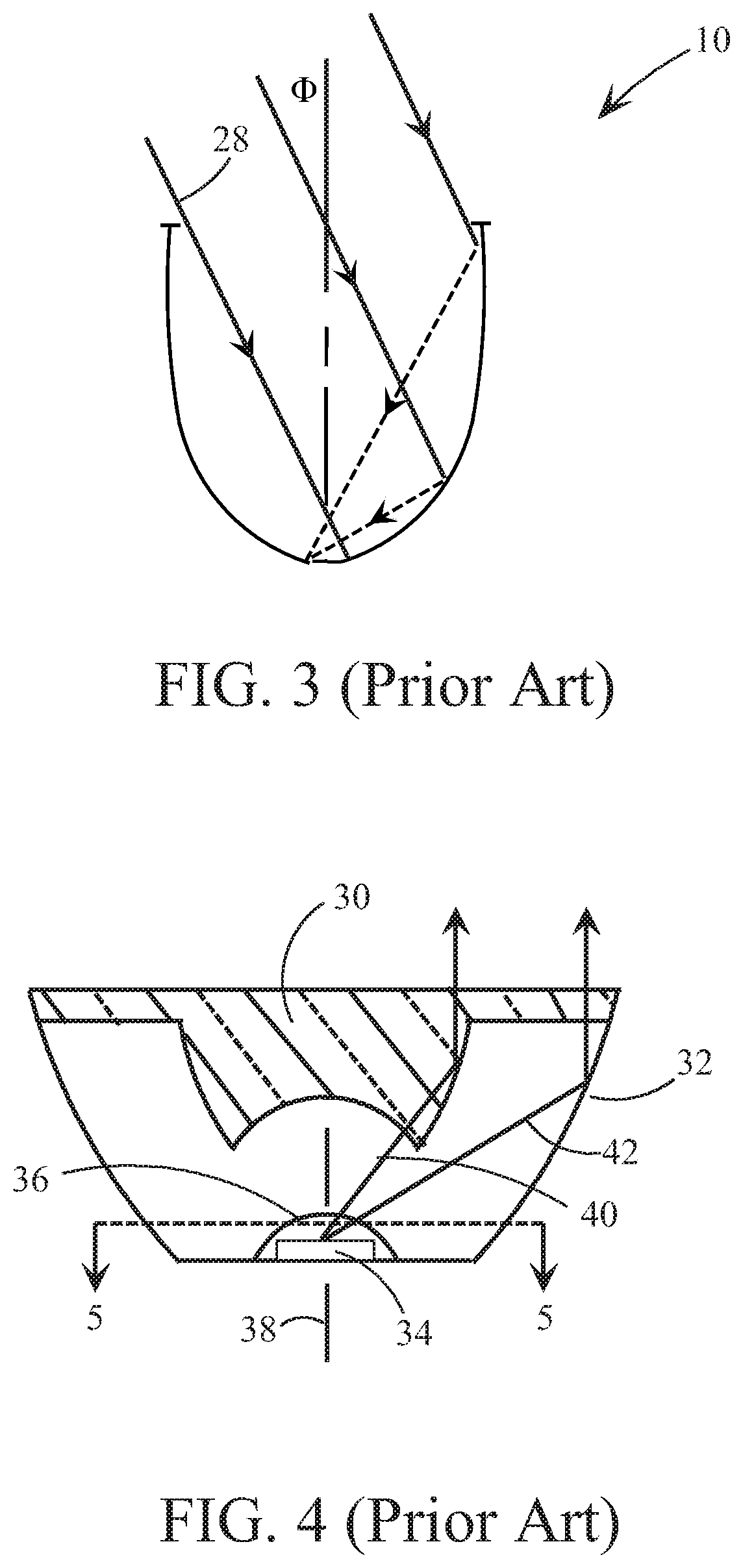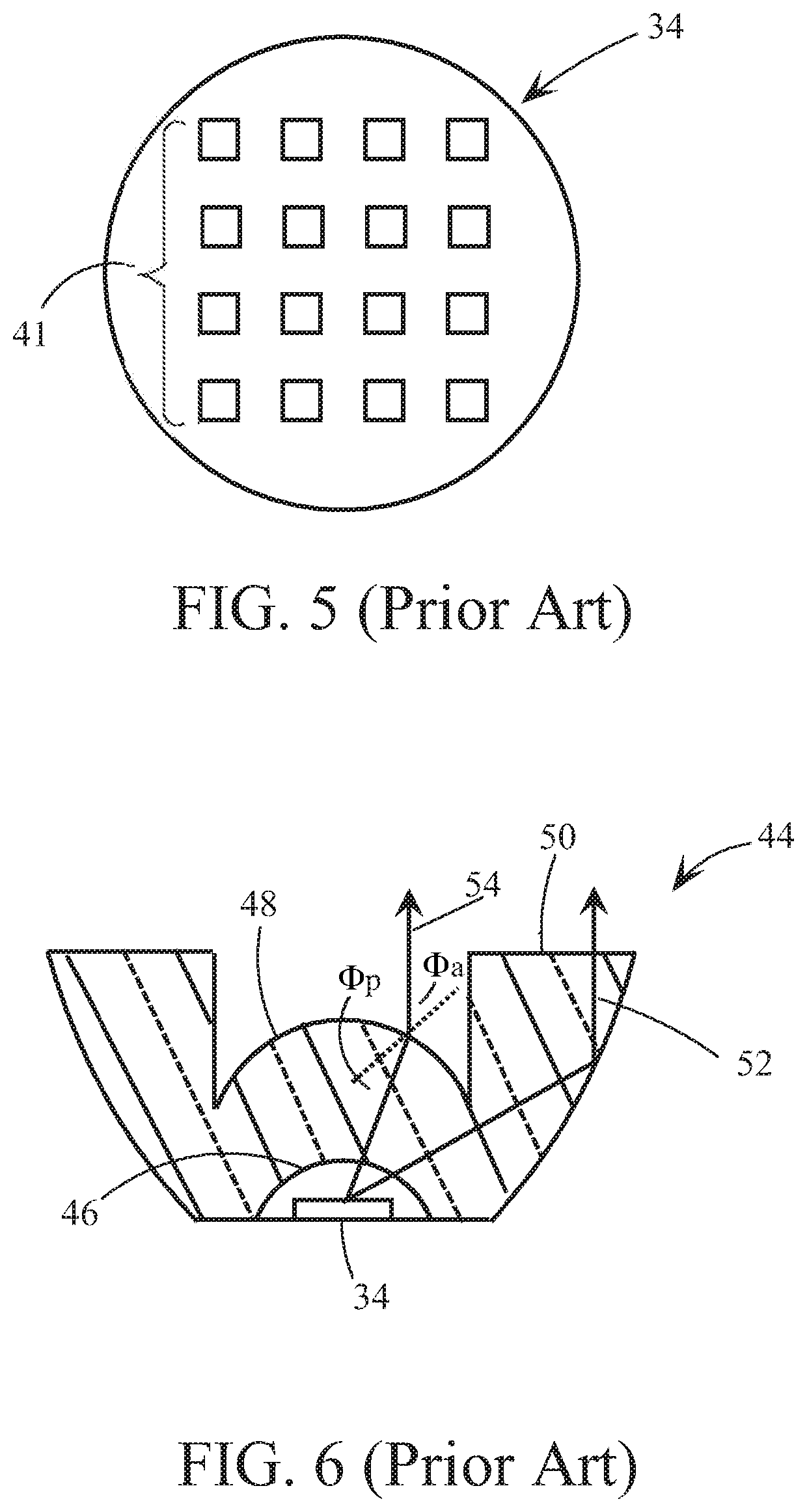Lens for improved color mixing and beam control of an LED light source
a technology of led light source and color mixing, which is applied in the field of total internal reflection (tir) lenses, can solve the problems of reducing the desired color mixing effect, and achieve the effect of improving the color mixing of led outpu
- Summary
- Abstract
- Description
- Claims
- Application Information
AI Technical Summary
Benefits of technology
Problems solved by technology
Method used
Image
Examples
Embodiment Construction
[0053]FIG. 8A illustrates lens 80 filled with material 82, e.g., an injection molded light transparent material. Material82 is bound between light entry region 84, light exit region 86, and TIR outer surface 88, which is shaped as a CPC. TIR outer surface 88 has a smaller exit region then a parabolic TIR, shown in dashed line 90. Moreover, exit region 86 comprises concave spherical surface 94, instead of most conventional parabolic lenses having a flat surface, shown in dashed line 96. Thus, FIG. 8A illustrates a comparison between a conventional parabolic lens 91 and the present lens 80. Present lens 80 is not only shaped as a CPC, but also is more compact in its configuration, being less than 2.5 inches in diameter for exit region 86, 1 inch in diameter for entry region 84, and no more than 1.4 inches in height from the entry region to the exit region. The entry region is defined as a planar base on which the LEDs 100 reside. The overall maximum height of the compact PAR dimension...
PUM
| Property | Measurement | Unit |
|---|---|---|
| radial angle | aaaaa | aaaaa |
| angle | aaaaa | aaaaa |
| beam angles | aaaaa | aaaaa |
Abstract
Description
Claims
Application Information
 Login to View More
Login to View More - R&D
- Intellectual Property
- Life Sciences
- Materials
- Tech Scout
- Unparalleled Data Quality
- Higher Quality Content
- 60% Fewer Hallucinations
Browse by: Latest US Patents, China's latest patents, Technical Efficacy Thesaurus, Application Domain, Technology Topic, Popular Technical Reports.
© 2025 PatSnap. All rights reserved.Legal|Privacy policy|Modern Slavery Act Transparency Statement|Sitemap|About US| Contact US: help@patsnap.com



